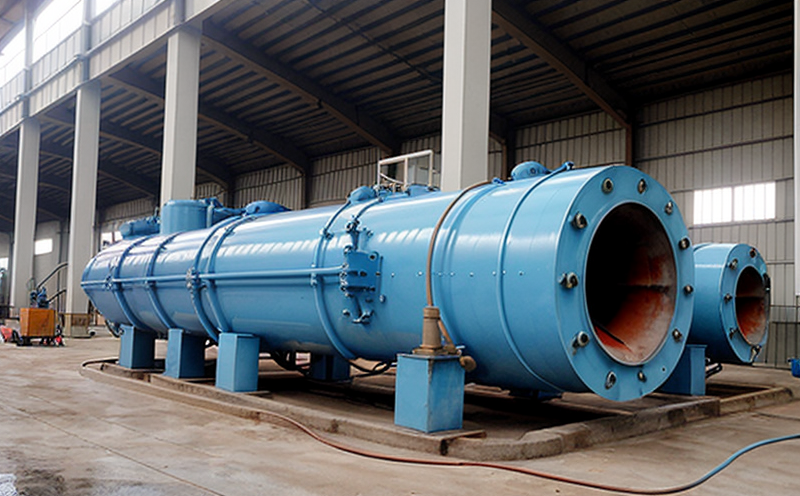Cooling water discharge inspection
The inspection of cooling water discharge is a critical process within the energy systems and environmental surveillance sector. This service ensures that industrial facilities meet stringent regulatory requirements related to water quality, environmental protection, and compliance with local and international standards.
Water discharged from cooling towers often carries contaminants such as biocides, scale inhibitors, corrosion inhibitors, and other chemicals used in the cooling system. Regular inspections are essential to prevent contamination of natural water bodies, protect aquatic life, and minimize the risk of biofilm formation within the facility’s own systems.
The inspection process typically involves a series of tests designed to evaluate the chemical composition, microbial content, and physical properties of the discharged water. These tests help determine whether the discharge is meeting regulatory limits set by environmental agencies such as the EPA (United States Environmental Protection Agency) or other relevant bodies in different countries.
Key parameters for inspection include:
- Total Organic Carbon (TOC)
- Biofilm formation potential
- Microbial count and species identification
- Chemical balance of biocides, scale inhibitors, and corrosion inhibitors
- pH levels
- Turbidity levels
- Discharge temperature
The goal is to ensure that the cooling water discharge does not contain harmful substances or exceed allowable limits. Failure to comply with these standards can result in significant financial penalties and reputational damage for the facility.
In addition to regulatory compliance, proper cooling water discharge inspection also contributes to energy efficiency by identifying opportunities to reduce chemical usage and optimize system performance. This service helps facilities achieve sustainable operations while minimizing their environmental impact.
For quality assurance, we adhere strictly to international standards such as ISO 17025 for our laboratory practices and ISO 14001 for environmental management systems. These certifications ensure that our inspections are conducted with the highest level of accuracy and reliability.
Benefits
Regular cooling water discharge inspection offers numerous benefits to facilities in the energy sector:
- Regulatory Compliance: Ensures adherence to environmental regulations, avoiding potential fines and legal issues.
- Environmental Protection: Minimizes harm to aquatic ecosystems by preventing contamination of natural water bodies.
- Economic Savings: Identifies opportunities for reducing chemical usage and optimizing system performance, leading to cost savings.
- Sustainability: Contributes to sustainable operations by promoting efficient use of resources and minimizing environmental impact.
- Risk Management: Helps in identifying potential risks early on, allowing for proactive measures to be taken.
In addition to these benefits, the service also enhances a facility’s reputation as an environmentally responsible organization. This can lead to increased customer trust and improved market positioning.
Quality and Reliability Assurance
- ISO 17025 Compliance: Our laboratory adheres to the strict standards set by ISO 17025, ensuring that all testing is accurate and reliable. This certification guarantees that our results are credible and meet international quality requirements.
- Traceability: All test methods and measurements can be traced back to national or international standards, providing a high level of confidence in the accuracy of the results.
- Consistency: Our testing process is consistent across all samples, ensuring that each inspection provides reliable data. This consistency is crucial for making informed decisions about water management practices.
- Data Validation: We employ advanced statistical methods to validate our test results, ensuring they are accurate and reliable.
Our commitment to quality and reliability ensures that every inspection delivers actionable insights into the condition of cooling water discharge. This allows facilities to take proactive steps to maintain optimal system performance while minimizing environmental impact.
Use Cases and Application Examples
The application of cooling water discharge inspection is diverse, catering to various industrial sectors including power generation, petrochemicals, and manufacturing. Here are some specific use cases:
- Power Plants: Regular inspections help in maintaining the efficiency of cooling towers and condensers, ensuring that they operate within optimal conditions.
- Petrochemical Facilities: These facilities often have large-scale cooling systems that require stringent monitoring to prevent contamination. Inspections ensure that the discharge meets regulatory standards and protects the environment.
- Manufacturing Plants: In industries like automotive, electronics, and pharmaceuticals, where clean water is critical for manufacturing processes, inspections help in maintaining water quality throughout the production cycle.
In each of these cases, the inspection service provides valuable data that can be used to optimize cooling systems, reduce chemical usage, and improve overall operational efficiency. This not only contributes to cost savings but also enhances the environmental sustainability of the facility.





